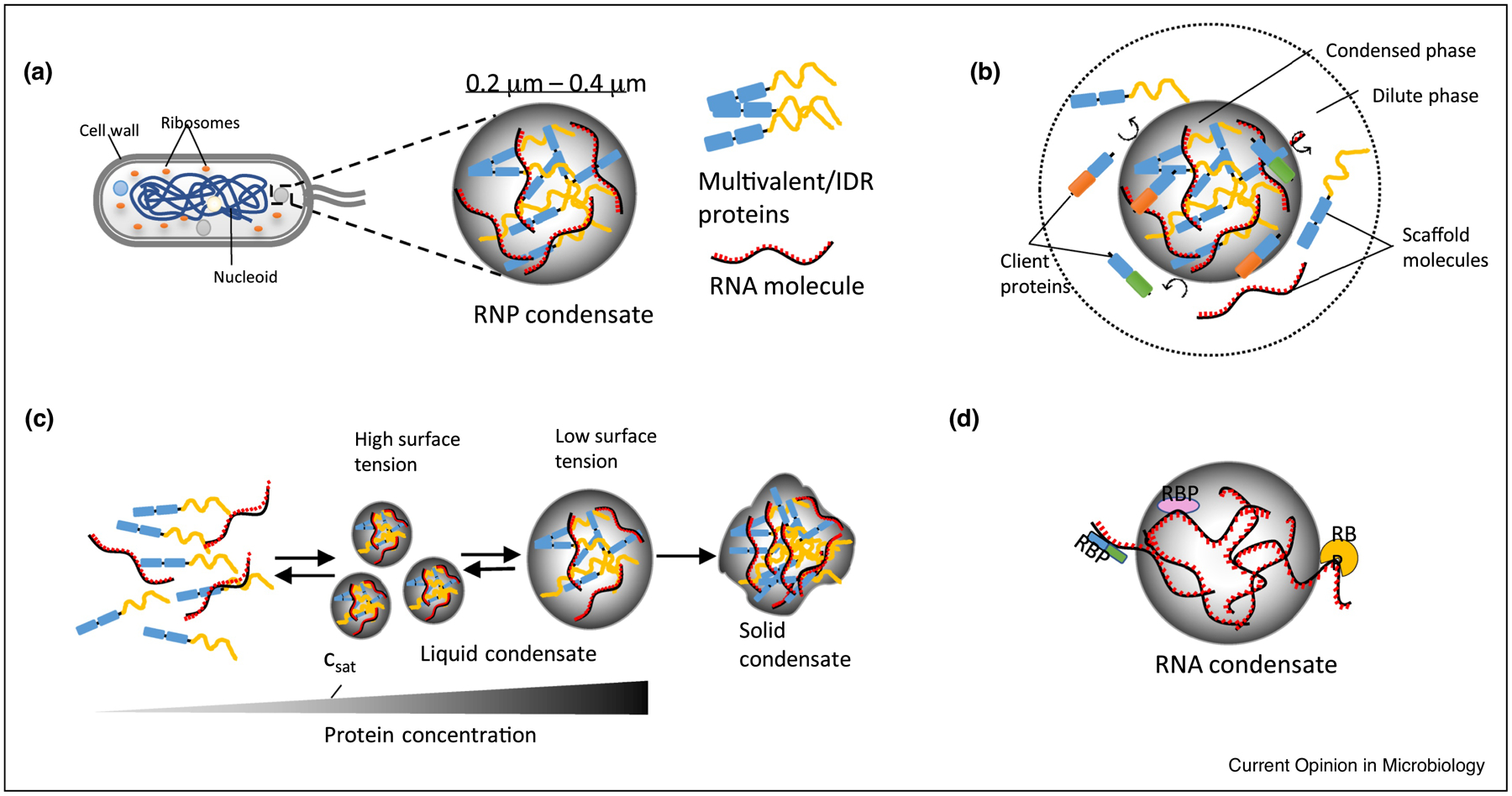Figure 1.

Basic properties of liquid-liquid phase separated condensates. (a) Bacterial cell showing condensates in the cytoplasm with one ribonucleoprotein (RNP) condensate enlarged. RNP condensates are formed by weak multivalent interactions between multivalent/intrinsically disordered proteins (IDPs) and RNA. Multivalency refers to the number of specific intra and as well inter molecular interactions. Multivalent domains can be present on both folded and intrinsically disordered regions (IDRs) of a protein. IDRs lack a defined structure and are enriched in disorder promoting amino acids (Arg, Pro, Gly, Glu, Ser, Ala and Lys). (b) Condensed phase is rich in macromolecules and the dilute phase sparse in macromolecules, nevertheless the system is in thermodynamic equilibrium because of the gain in net free energy (ΔG) in the condensed phase. Condensates are selective in recruiting protein and RNA molecules that may have promoting or inhibitory effect on the condensates. Multivalent/IDR proteins and RNA molecules acts as scaffold molecules in recruiting client protein and RNA molecules into the condensate. (c) The formation of liquid condensates is reversible. At concentrations above the critical saturation concentration (csat), the proteins or RNA molecules condense into droplets, and the smaller droplets can fuse to become bigger droplets as this process lowers the surface tension of smaller droplets. Intracellular or extracellular stimulation may lead to the dissolution of condensates. Liquid condensates can turn into solid condensates by accumulating large number of macromolecules and this process is often irreversible. (d) RNA alone has the intrinsic property to undergo phase separation and RNA molecules can in turn recruit specific RNA binding proteins (RBPs) ultimately forming an RNP granule.
